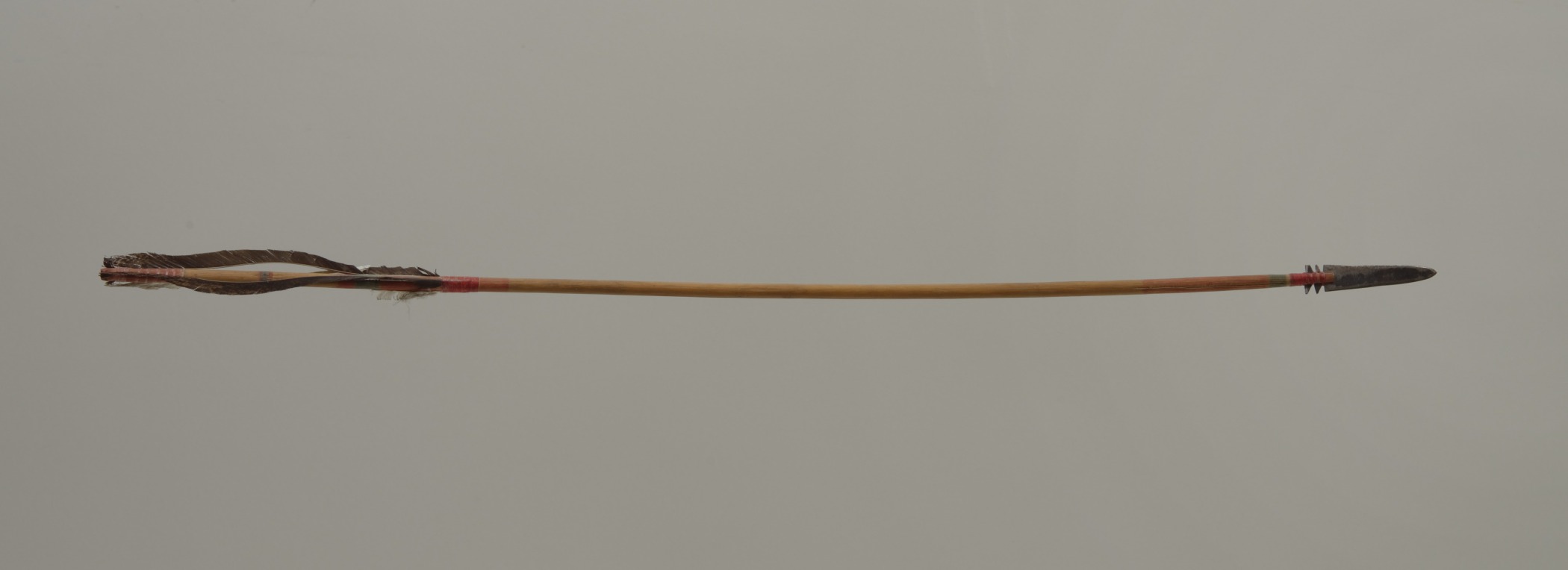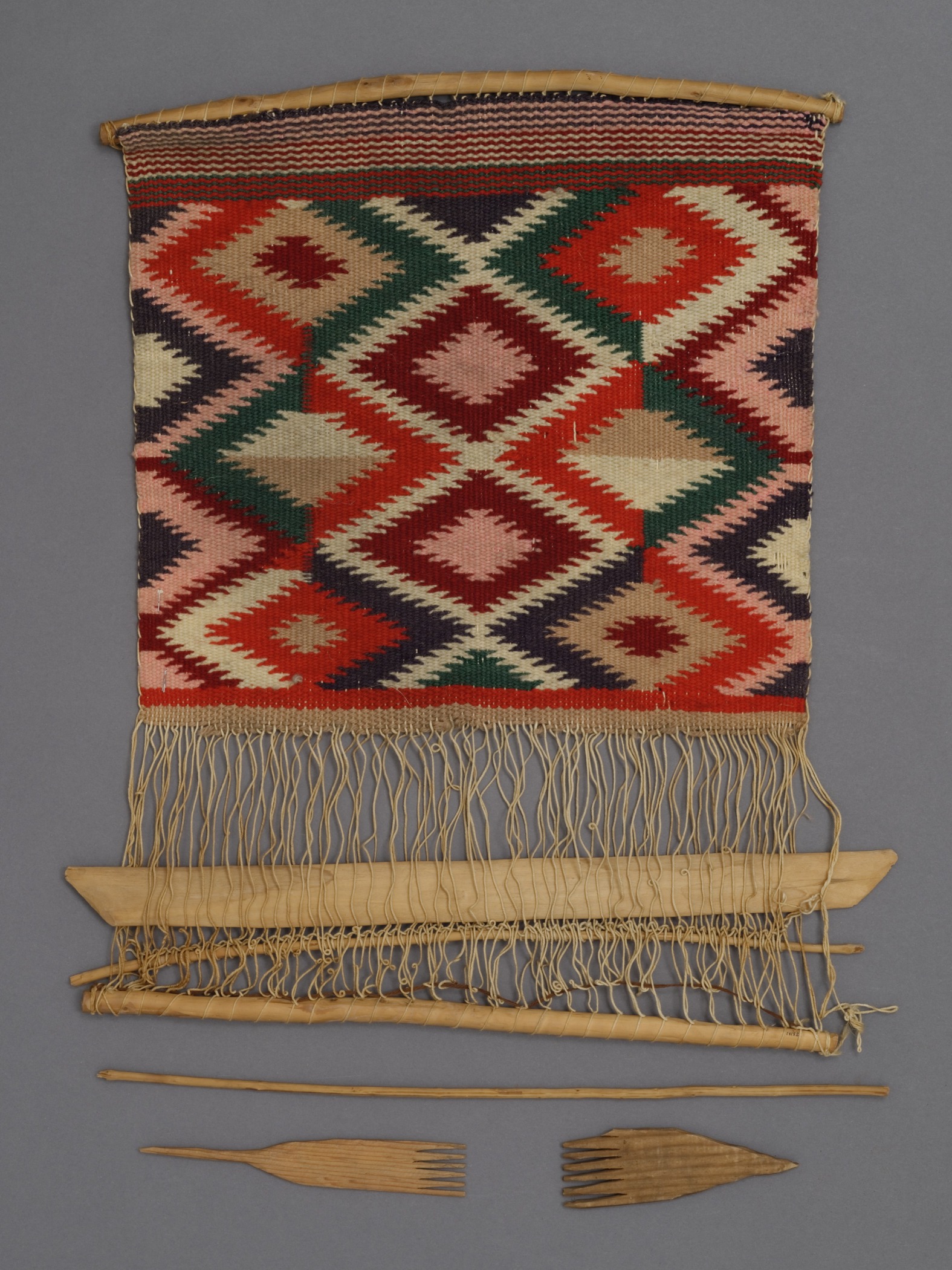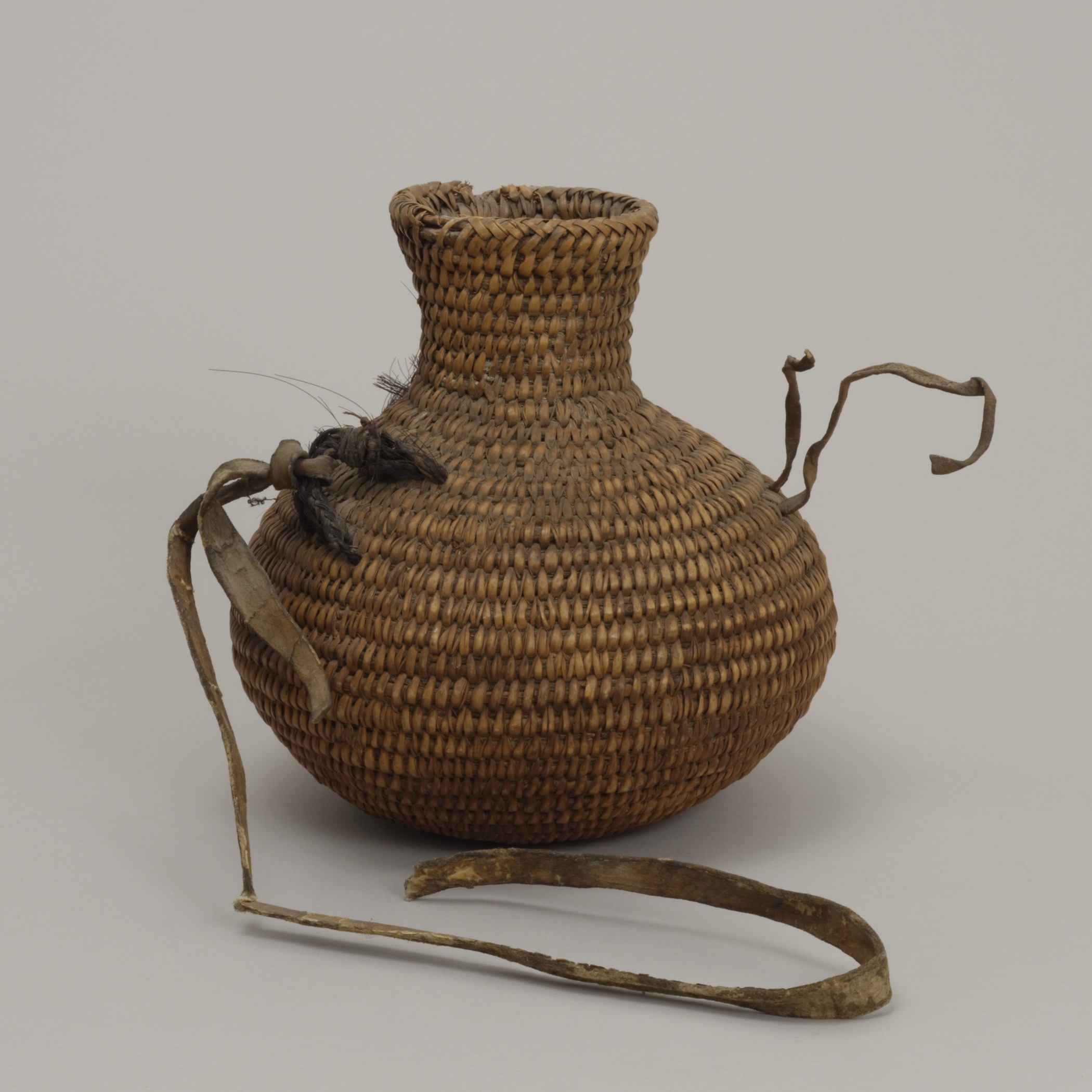Mescalero Apache, New Mexico
Horse saddlebag
- About 1900
- Rawhide, Native-tanned hide, wool cloth, glass beads, sinew, and ink
- 32 1/2 × 9 1/16 in. × 51 15/16 in.
Hood Museum of Art, Dartmouth College: Bequest of Frank C. and Clara G. Churchill; 46.17.9959
visibilityLook & DiscussThe cultures of the Southwest were the first North American people to acquire a revolutionary new tool—horses. Apaches arrived in the Southwest from their home in the North around the year 1400. They acquired horses from the people of the pueblos in the early 1600s, who, in turn, had acquired them from the Spanish.
The Apache became great riders, better even than the Spanish. Horses allowed them to move more easily from place to place, transport heavier belongings, and hunt more buffalo, and gave them an advantage in raiding and war.
Horses were highly valued and equipped with beautiful regalia, or ceremonial clothing. Apache riders did not use saddles. They did, however, craft special bags that were thrown over the back of the horse to carry objects.
Explore the Object
This saddlebag is made of soft, native-tanned hide, and sewn with sinew. The top layer of the hide has been cut away in a decorative pattern to reveal two panels of red-flannel trade cloth. In addition, glass trade beads have been added. Rawhide fringe is added to the sides.
This saddlebag was designed to make the horse and rider look magnificent. The whiteness of the bag and its contrasting red fabric would have stood out against the dark coat of the horse. The glass beads glinting in the sunlight and the fringe fluttering in the wind would draw the eye to the horse and rider.




